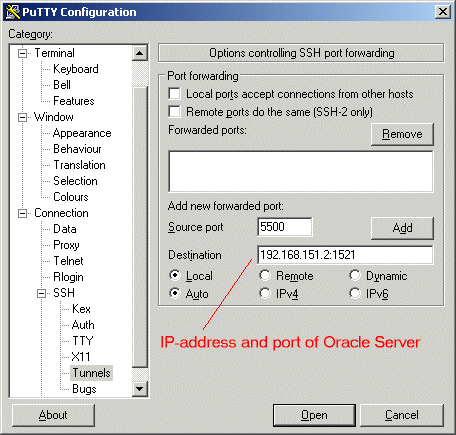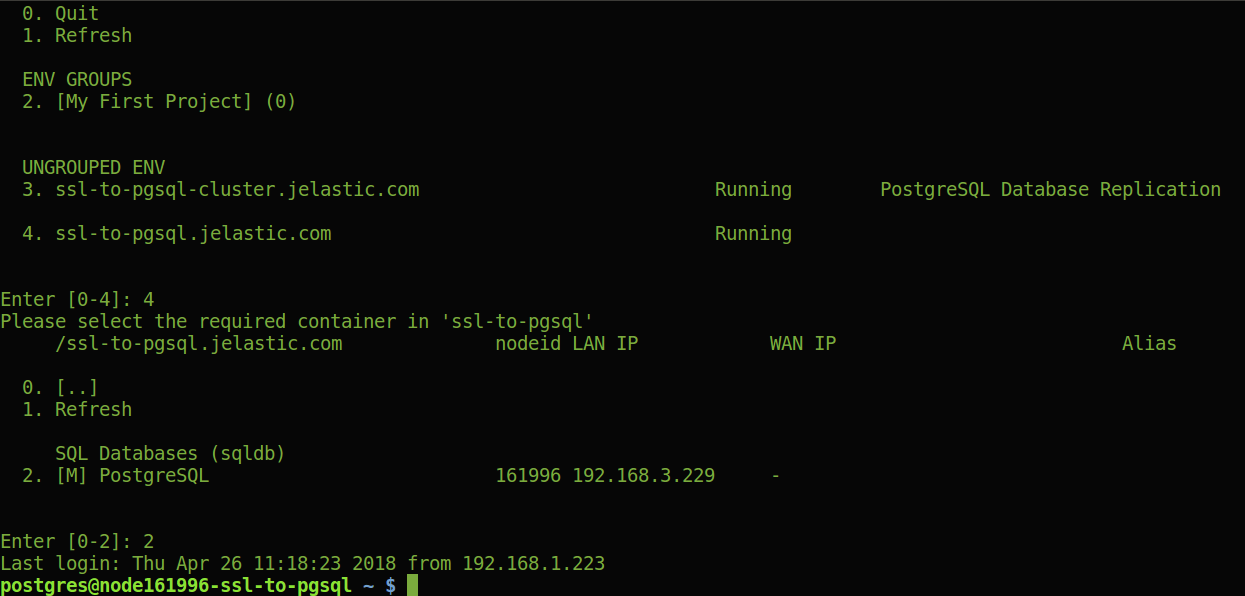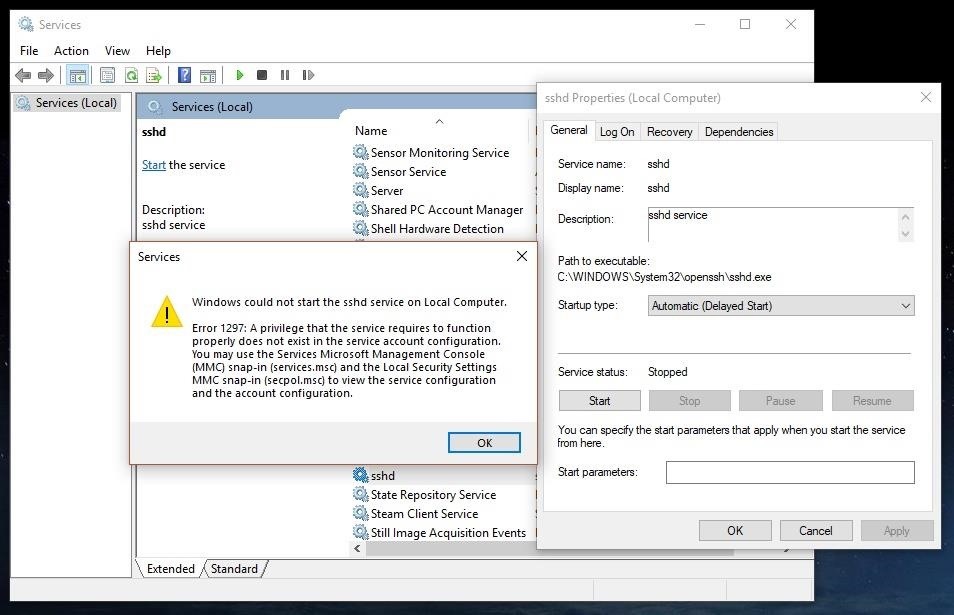You can ssh directly to a local IP provided that your LAN uses static IPs, for example ssh someuser@192.168.1.2 You can edit hosts file in both computers, as mentioned by Ed Manet in his answer. That way you can then ssh using computer's hostname, that is ssh someuser@somehostname. Find a local process server in Buffalo, New York. ServeNow.com is a worldwide directory of local process serving companies and legal support professionals. COVID-19 Resources for Process Servers. See all of the local news from across Buffalo and Western New York covered by WKBW all in one place - no filter. Includes coverage of news in metro Buffalo, Erie County, Niagara Falls, Niagara. SSH is a network tool used for remote, command-line login to systems that have the server enabled. It has sibling applications named SFTP and SCP that can be used to copy files. Windows 10 systems with build 1803 or newer and Windows Server 2019 come with an implementation of. The default command shell provides the experience a user sees when connecting to the server using SSH. The initial default Windows is the Windows Command shell (cmd.exe). Windows also includes PowerShell and Bash, and third party command shells are also available for Windows and may be configured as the default shell for a server.
An SSH session is like a portal into another machine. If you’re used to working with Windows, you’ll know how easy it is to transfer files from one location to another. Just drag and drop! No text commands, no authentication, none of that.
However, sometimes you will need to download a file from SSH to your local desktop, such as if you are using one of our Linux VPS servers. And there’s no simple command from within the SSH terminal itself to do this. The two environments are too far apart. However, we have a dedicated tool called “SCP” which stands for “Secure Copy” that’s made for precisely these kinds of situations.
Here’s how it works. First, we have a file on the remote server called filetodownload.txt, as shown here:
We’re going to transfer this file from Linux to our Windows desktop.
Step 1: Gather the Necessary Information
To transfer a file from a remote server via SSH using SCP, we need the following pieces of information:
- Login credentials – username, server name or IP address, and password
- The port number for SSH connections
- The path to the file on the remote server
- The path to the download location
You should already have the login credentials when you connect to the server using PuTTY, or some other tool, so we won’t go into it here.
As for the port number, you’ll need to know which SSH server port your VPS listens to. It’ll either be 22 (the default port), or it’ll be given to you when you order your VPS from your hosting provider.
To get the full path to the file you want to transfer, enter the “pwd” command on the CLI of the remote server while the file is in your current directory. This will give you the folder name, like this:
Now just append the name of the file to the path you get and you’re done.
As for the path to the download location, that’s something you have to get on your own!
Step 2: Create the SCP Command
The SCP command looks like this:

Replace the sections in bold with the information you gathered in step 1. For example, the command used for this example is:
Step 3: Running the Command
Open up a command line in Windows. Windows 10 already has SCP installed by default. For this example, we’ll use the Windows PowerShell tool to run the commands. The color contrasts with the yellow, and syntax highlighting is a nice change from the drab command line.
Pasting the above command into the local command line editor gives us:
As you can see, you first need to confirm the connection using the RSA fingerprint of the remote server. Once you type “yes”, it’ll be permanently added to the “known_hosts” file.
The “known_hosts” file in Windows is located at:
Replace [UserName] with your own Windows username. It’s a file without an extension, like this:

An editor like Notepad++ is ideal for these kinds of files. Each RSA fingerprint is added on a new line. This allows you to clear them easily by deleting an entire line at once if you ever need to remove an entry.
Once you provide your password in the prompt, the file is downloaded immediately, as shown here:
And you’re done! Navigate to the location you specified in your SCP command and the file should be visible.
SCP is the most direct way to transfer files from remote servers to local systems. It makes use of the same SSH protocols, so the connection is encrypted all the way through, making it immune to man-in-the-middle attacks. Hopefully, this tutorial will help you use it in an efficient, and easy manner. If you use one of our Managed Linux VPS services, and you have an issue with SCP or need more information about it please don’t hesitate to contact our 24×7 Linux Server Support, which comes included with your hosting plan.
If this tutorial helped you move files from your remote server to your local machine, maybe consider sharing this knowledge with your friends by using our share shortcuts. You can also leave any additional tips or questions in our comment section below. Thank you.
-->This topic covers the Windows-specific configuration for OpenSSH Server (sshd).
OpenSSH maintains detailed documentation for configuration options online at OpenSSH.com, which is not duplicated in this documentation set.
Configuring the default shell for OpenSSH in Windows
Ssh Port Forwarding Command
The default command shell provides the experience a user sees when connecting to the server using SSH.The initial default Windows is the Windows Command shell (cmd.exe).Windows also includes PowerShell and Bash, and third party command shells are also available for Windows and may be configured as the default shell for a server.
To set the default command shell, first confirm that the OpenSSH installation folder is on the system path.For Windows, the default installation folder is SystemDrive:WindowsDirectorySystem32openssh.The following commands shows the current path setting, and add the default OpenSSH installation folder to it.
| Command shell | Command to use |
|---|---|
| Command | path |
| PowerShell | $env:path |
Configuring the default ssh shell is done in the Windows registry by adding the full path to the shell executable to ComputerHKEY_LOCAL_MACHINESOFTWAREOpenSSH in the string value DefaultShell.
As an example, the following Powershell command sets the default shell to be PowerShell.exe:
Windows Configurations in sshd_config
In Windows, sshd reads configuration data from %programdata%sshsshd_config by default, or a different configuration file may be specified by launching sshd.exe with the -f parameter.If the file is absent, sshd generates one with the default configuration when the service is started.
The elements listed below provide Windows-specific configuration possible through entries in sshd_config.There are other configuration settings possible in that are not listed here, as they are covered in detail in the online Win32 OpenSSH documentation.
AllowGroups, AllowUsers, DenyGroups, DenyUsers
Controlling which users and groups can connect to the server is done using the AllowGroups, AllowUsers, DenyGroups and DenyUsers directives.The allow/deny directives are processed in the following order: DenyUsers, AllowUsers, DenyGroups, and finally AllowGroups.All account names must be specified in lower case.See PATTERNS in ssh_config for more information on patterns for wildcards.
When configuring user/group based rules with a domain user or group, use the following format: user?domain*.Windows allows multiple of formats for specifying domain principals, but many conflict with standard Linux patterns.For that reason, * is added to cover FQDNs.Also, this approach uses '?', instead of @, to avoid conflicts with the username@host format.
Work group users/groups and internet-connected accounts are always resolved to their local account name (no domain part, similar to standard Unix names).Domain users and groups are strictly resolved to NameSamCompatible format - domain_short_nameuser_name.All user/group based configuration rules need to adhere to this format.
Examples for domain users and groups
Examples for local users and groups
AuthenticationMethods
For Windows OpenSSH, the only available authentication methods are 'password' and 'publickey'.
AuthorizedKeysFile

The default is '.ssh/authorized_keys .ssh/authorized_keys2'. If the path is not absolute, it is taken relative to user's home directory (or profile image path). Ex. c:usersuser. Note that if the user belongs to the administrator group, %programdata%/ssh/administrators_authorized_keys is used instead.
ChrootDirectory (Support added in v7.7.0.0)
This directive is only supported with sftp sessions. A remote session into cmd.exe wouldn't honor this. To setup a sftp-only chroot server, set ForceCommand to internal-sftp. You may also set up scp with chroot, by implementing a custom shell that would only allow scp and sftp.
HostKey
The defaults are %programdata%/ssh/ssh_host_ecdsa_key, %programdata%/ssh/ssh_host_ed25519_key, %programdata%/ssh/ssh_host_dsa_key, and %programdata%/ssh/ssh_host_rsa_key. If the defaults are not present, sshd automatically generates these on a service start.
Match
Note that pattern rules in this section. User and group names should be in lower case.
PermitRootLogin
Not applicable in Windows. To prevent administrator login, use Administrators with DenyGroups directive.
SyslogFacility
If you need file based logging, use LOCAL0. Logs are generated under %programdata%sshlogs.For any other value, including the default value, AUTH directs logging to ETW. For more info, see Logging Facilities in Windows.
Not supported
Remote Port Forwarding Ssh
The following configuration options are not available in the OpenSSH version that ships in Windows Server 2019 and Windows 10 1809:
Ssh Local Forwarding
- AcceptEnv
- AllowStreamLocalForwarding
- AuthorizedKeysCommand
- AuthorizedKeysCommandUser
- AuthorizedPrincipalsCommand
- AuthorizedPrincipalsCommandUser
- Compression
- ExposeAuthInfo
- GSSAPIAuthentication
- GSSAPICleanupCredentials
- GSSAPIStrictAcceptorCheck
- HostbasedAcceptedKeyTypes
- HostbasedAuthentication
- HostbasedUsesNameFromPacketOnly
- IgnoreRhosts
- IgnoreUserKnownHosts
- KbdInteractiveAuthentication
- KerberosAuthentication
- KerberosGetAFSToken
- KerberosOrLocalPasswd
- KerberosTicketCleanup
- PermitTunnel
- PermitUserEnvironment
- PermitUserRC
- PidFile
- PrintLastLog
- RDomain
- StreamLocalBindMask
- StreamLocalBindUnlink
- StrictModes
- X11DisplayOffset
- X11Forwarding
- X11UseLocalhost
- XAuthLocation

